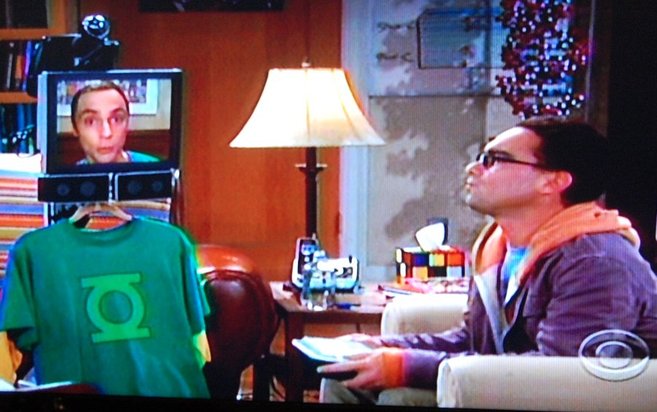In the not-too-distant future, projectors will replace screens as the dominant mode of displaying visual information with a robot.
There are several reasons for this, but the most critical is that a screen can only go where you can physically position it. A projection can go wherever you can see. When you add to this the fact that projections are the only way of doing augmented reality that is physically proximate to the reality being augmented, and the best way of doing so for multiple people to see at once, it's clear that there's a huge opportunity here.
Unlike screens, projectors don't require semi-permanent infrastructure; you can put a picture in the same place on a wall starting with the projector in a bunch of different locations - or on a mobile robot. The power and data cords also go to the projector, not the projection - not so for a screen.
Projections scale more easily than screens; you can't make a big screen bigger, and if you shrink the picture there's a lot of wasted space. With a projector if you want the picture on your hand rather than the wall, you just point it at your hand. If you want the picture to be larger, you just move the projector away from the wall a bit more.
For robots, projectors just make so much sense! So why do most consumer robots with visual output on the market today use a screen?
There are several reasons for this, but the most critical is that a screen can only go where you can physically position it. A projection can go wherever you can see. When you add to this the fact that projections are the only way of doing augmented reality that is physically proximate to the reality being augmented, and the best way of doing so for multiple people to see at once, it's clear that there's a huge opportunity here.
Unlike screens, projectors don't require semi-permanent infrastructure; you can put a picture in the same place on a wall starting with the projector in a bunch of different locations - or on a mobile robot. The power and data cords also go to the projector, not the projection - not so for a screen.
Projections scale more easily than screens; you can't make a big screen bigger, and if you shrink the picture there's a lot of wasted space. With a projector if you want the picture on your hand rather than the wall, you just point it at your hand. If you want the picture to be larger, you just move the projector away from the wall a bit more.
For robots, projectors just make so much sense! So why do most consumer robots with visual output on the market today use a screen?

I suspect that the main reason is an implicit anthropomorphism like that I discussed in my previous post. Designers still think that people want to look at the robot, so they put a screen on it.
I prefer a contrary approach: people shouldn't be looking at the robot - they should be looking at the information it presents. Given that approach, it makes a lot more sense to put the visual information where it's most accessible to the user, and I see no good reason why this should be co-located with the robot.
Technology should solve problems, but should do so in the least interruptive manner possible. For this reason, I want to see more robots that stay out of your way until they're needed, that don't bug you with notifications, that drive themselves from A to B, and that give you the information you want, where you want it.
I prefer a contrary approach: people shouldn't be looking at the robot - they should be looking at the information it presents. Given that approach, it makes a lot more sense to put the visual information where it's most accessible to the user, and I see no good reason why this should be co-located with the robot.
Technology should solve problems, but should do so in the least interruptive manner possible. For this reason, I want to see more robots that stay out of your way until they're needed, that don't bug you with notifications, that drive themselves from A to B, and that give you the information you want, where you want it.
 RSS Feed
RSS Feed